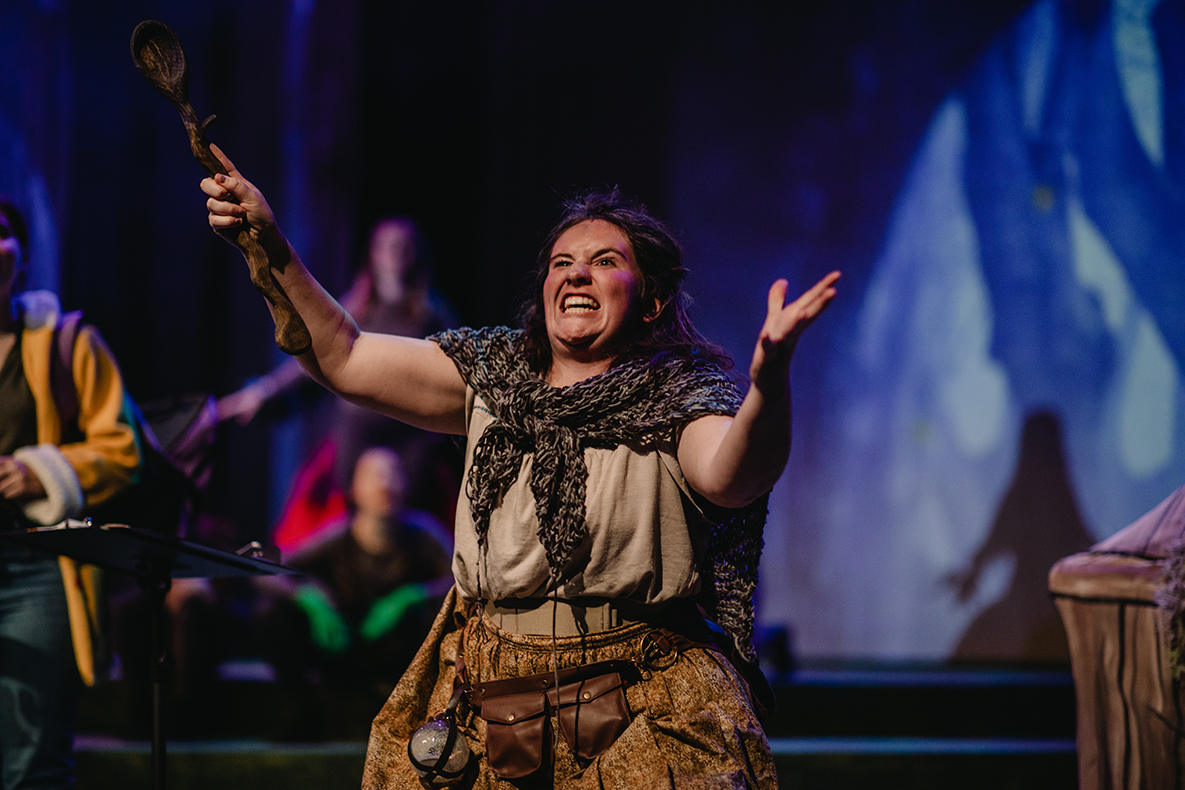Creating something from nothing isn’t necessarily new for Iowa State’s music and theatre students, whose academic pursuits include composing music, writing scripts or choreographing dances.
But this spring, they imagined something even bigger — an entirely new musical. For the first time in the Department of Music and Theatre’s history, students collaborated with two guest artists — librettist Jessica Kahkoska and composer Elliah Heifetz — to stage a brand-new musical, “BABA,” using a workshopping technique. Students performed the show four times in April in Iowa State’s Fisher Theater.
Never-ending story
In theatre, workshopping offers playwrights and composers the opportunity to develop and improve their material prior to a full-scale production. It’s a literal work-in-progress that evolves constantly — from concept to performance. For ISU Theatre, the goal was to create a final production for audiences, but not necessarily stage a complete musical.
“From the very beginning, I had been telling everybody that this process will be necessarily incomplete, that we are not the final destination,” said Cason Murphy, assistant professor of theatre and the show’s faculty director. “We are a stop on the journey of this piece.”
An old tale gets new life
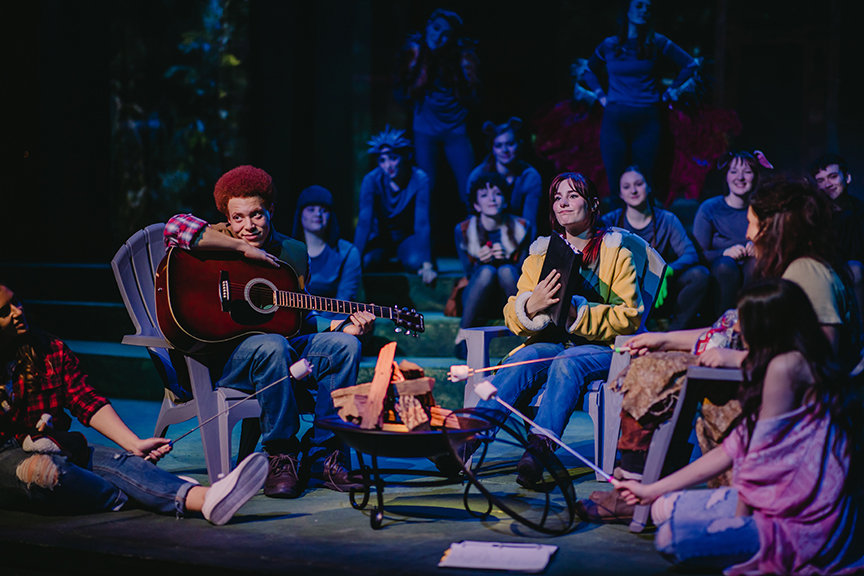
Inspired by his own undergraduate theatre workshop experience, Murphy yearned to give Iowa State’s musical theatre students an opportunity to witness firsthand how a full-scale musical comes to life. So last summer he put a request on the New Play Exchange, a digital script library, seeking musicals to workshop. The response was robust with more than 100 submissions to consider.
Murphy was impressed with a pitch from Kahkoska and Heifetz, who had been contemplating a musical that is a modern twist on a Russian folktale about a witch named Baba Yaga. While the traditional story varies, Baba Yaga typically is portrayed as an old, hunchbacked woman sporting crooked teeth and wrinkly skin. She resides in the forest in a cabin supported by stilts that look like chicken legs. Though sometimes portrayed as helpful, Baba Yaga is usually a malevolent character with an appetite for children.
“As we are now dealing with climate change on a day-to-day basis, it has become less of a niche subgenre for theatre to tackle in smaller projects. It’s something that we’re exploring in a mainstream way.”
Kahkoska and Heifetz’s version of this magical tale tells the story of Sylvie, a 14-year-old American teenage climate activist who lives near a forest in modern-day Appalachia. Sylvie’s stepmother recruits her to convince an old woman living in the nearby forest to convert her land into a conservation area. However, Sylvie soon discovers that her stepmother has sinister plans for the forest, and that the old woman is the mythical, powerful Baba Yaga. Sylvie befriends Baba Yaga and asks her to use her mystical interventions to help Sylvie save the forest from her stepmother’s ruse.
Kahkoska and Heifetz, who regularly collaborate on theatrical projects, are both drawn to mythical stories. They saw “BABA” as an opportunity to address a contemporary issue — climate change — in the context of a familiar tale.
“As we are now dealing with climate change on a day-to-day basis, it has become less of a niche subgenre for theatre to tackle in smaller projects,” Kahkoska said. “It’s something that we’re exploring in a mainstream way.”
Murphy was confident that addressing a significant current issue, like the climate crisis, would appeal to both Iowa State students and audiences.
“Jess and Elliah said this story had a contemporary setting, dealt with issues about the environment and the climate crisis, which connects with a lot of the things that we’re interested in here at Iowa State,” Murphy said. “This musical tackles some of those ideas.”
The workshop process
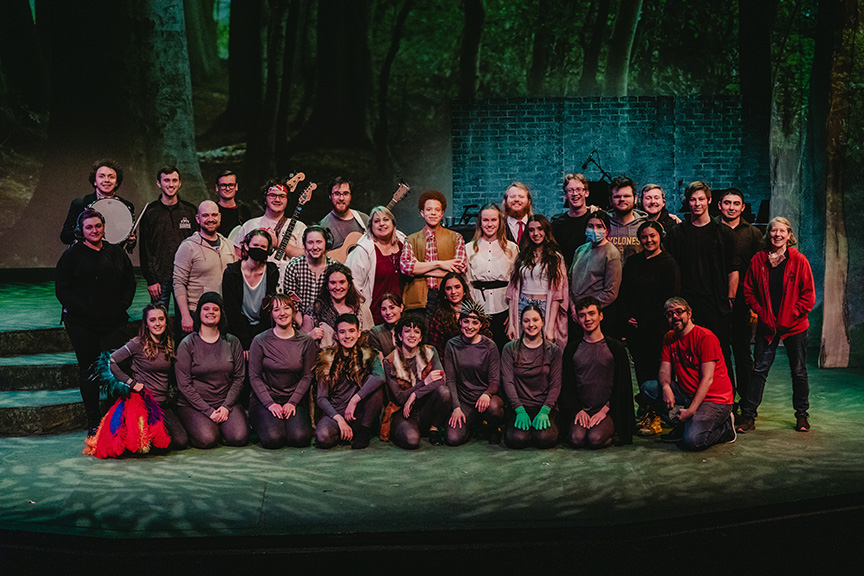
“BABA” was the impetus for Murphy’s new class in the Department of Music and Theatre during spring semester, called Advanced Musical Theatre Seminar. As faculty director of the musical, Murphy was the nexus between the guest artists and the students. He regularly communicated ideas from students with Kahkoska and Heifetz, and also guided the students as they developed scenes and other aesthetics of the story.
“This was a brand-new venture for us,” he said. “This was the first time we offered that class, so there was a lot of pedagogical work happening as well as production work that was new for the students.”
“From day to day, things would change, pieces would come and go, and you didn’t have a lot of control over it. You have to be really flexible in a process like that. It makes it so exciting and fun, and keeps you ready for whatever is coming next.”
At the start of the semester, Kahkoska and Heifetz presented Murphy with a script outline and two original songs. From there, the students dug in and began developing story lines, characters and set designs. Murphy reminded students throughout the semester that while their ultimate goal was to stage a performance by April, a workshop is a fluid, incomplete process. This concept is somewhat jarring to college students, who are used to rehearsing a finished script and performing it as the writer intended.
“It’s like looking at a production from 25,000 feet and saying, ‘Oh, we’ve got some of the map, but some of the map we have to carve out on our own,’” Murphy said. “There was structure to keep us focused, but we also knew there might be things that didn’t quite land right, which is really true of our industry.”
Students quickly adapted to the concept. Valentine Chenus (‘24 environmental science, performing arts), an assistant director of the show as well as a cast member, discovered that adaptability was key to the success of “BABA.”
“From day to day, things would change, pieces would come and go, and you didn’t have a lot of control over it. You have to be really flexible in a process like that,” Chenus said. “It makes it so exciting and fun, and keeps you ready for whatever is coming next.”
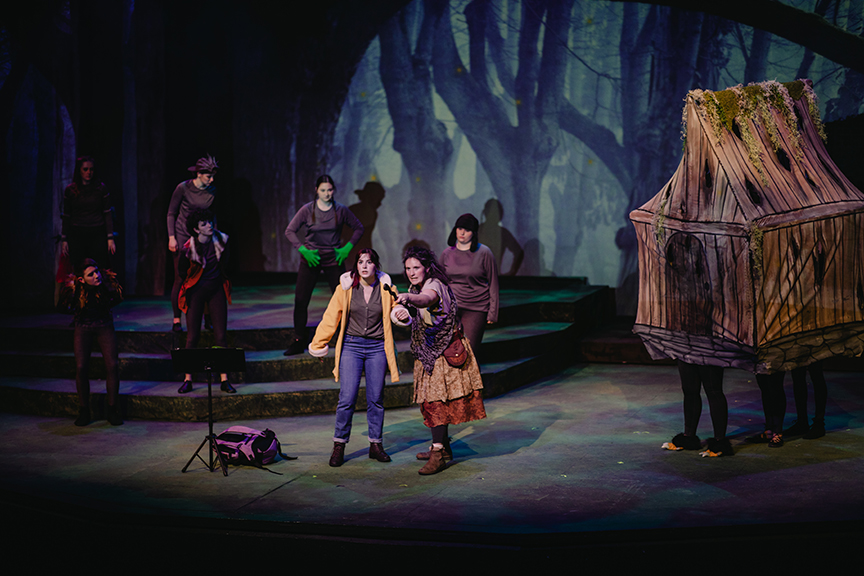
Taylor Noe (‘24 graphic design), who played Sylvie in the show, said she learned to let go of theatrical norms and embrace the unknowns.
“The most challenging part of this whole experience was definitely the fact that we didn’t have everything we needed at the start of rehearsals,” Noe said. “We started with a rough draft of a script that wasn’t even finished yet, and we had to really trust the process.”
Murphy said exposing students to the rigors of producing a workshopped musical will equip them for future careers in theatre.
“Out in the real world, if you’re lucky enough to work on a new production, you will have people who are responding in real time,” he said. “It’s less theoretical than what we talk about in our classes. We’re bringing the playwright and the composer right to them, and they are in real-time conversations, which is thrilling and exciting because it really gives the students say over the final product.”
Resident artists
Kahkoska and Heifetz spent a week on campus in March, working directly with Murphy and the students to fine-tune the script and score of “BABA.” In just a few days, Kahkoska wrote or edited more than 90 pages of script, and Heifetz composed multiple songs. The artists spent their days editing, writing, composing and preparing for evening rehearsals, where students brought their ideas to life and offered suggestions of their own. The next day, the process started over again.
“I love working with students. The opportunity to develop new work in a university setting is exciting because there’s so much discovery happening with the piece, as well as with the students,” Kahkoska said. “When you’re writing a show, you’ve never heard anyone read it or sing it, so this was a really special opportunity because the first time this piece was performed was by ISU students.”
A lasting impression
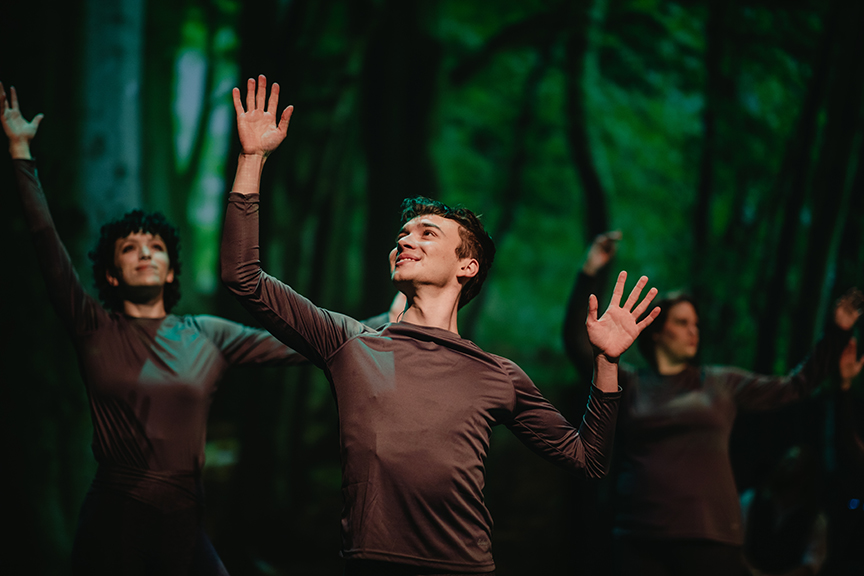
Working with professionals from the theatre industry offered the students unprecedented opportunities to put their mark on a new musical.
“It’s truly a special experience to add your own fingerprints on the script, music, story and characters,” Noe said. “I really appreciated the opportunity to help shape the story and help it grow.”
Chenus also enjoyed the opportunity to mold a musical from beginning to end.
“I loved the unfamiliarity with this show. I think it inspired a lot more room for creativity and innovation within theatre,” she said. “When you know exactly everything you need to do and everything is predictable, it can be really detrimental to your artistry.”
Together, the guest artists, students, Murphy and the Iowa State design and production team married their talents to create “BABA” in a matter of months, a feat that usually takes five to seven years to accomplish. They began with a concept, fleshed out the production and successfully staged it to rave reviews. But even after the final curtain call in Ames, the show will continue to evolve. Where it goes now is up to Kahkoska and Heifetz.
“It’s truly a special experience to add your own fingerprints on the script, music, story and characters. I really appreciated the opportunity to help shape the story and help it grow.”
“This is technically their material,” Murphy said. “We helped shape the clay, figure out was working, what wasn’t working. But ultimately, it goes back to them.”
Kahkoska hopes “BABA” will continue to transform into something bigger and even better.
“We were excited to learn insight and gain feedback from the ISU audiences who saw the show,” she said. “The next developmental step for this musical might be in New York or another place around the country.”
